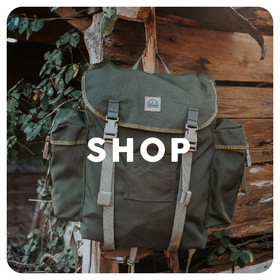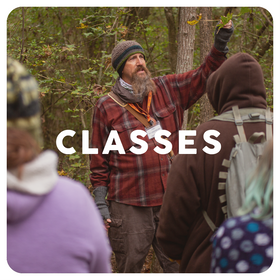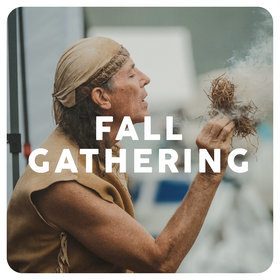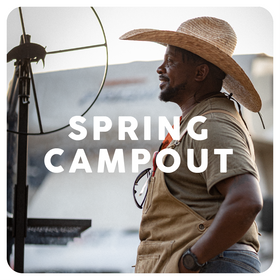
Medicinal Trees of Georgia
There are all sorts of health benefits acquired during acts of bushcrafting – exercise, vitamin D, improved balance, better sleep, and a clearer mind. Big Pharma hates this, at least the new Big Pharma does. The old Big Pharma just watches and waits, knowing its time will come again. Our original pharmacy was nature – her plants and mushrooms. It doesn't get any bigger than trees! So, let's learn about some medicinal uses of trees that can be useful to bushcrafters, woodloafers, and wild vagabonds.
Covering ALL the medicinal uses of these five trees could fill a book. Instead, I'll be focusing on my favorite uses that are most appropriate for fellow bushcrafters. Some of these medicinal powers are as simple as eating a leaf, while others take some prep work. In every case, all the steps needed to access these abilities can be done in the wild. Note I won't be covering how to identify them. That step will be left to the reader as good practice.
Pine

There are so many uses for pine but let's focus on the sap, or more precisely, rosin. This is sap that has had most or all of its turpentine removed. Hard sap found on the old wound of a pine tree is a good example of rosin, or you can heat fresh, sticky sap carefully in a metal pot to drive off its turpentine. Note, whatever container you use to heat the sap will forevermore be your "sap pot" as you'll never get all of it out again.
My favorite medicinal use for pine sap is as part of a "drawing salve". This is a material that is applied to the skin over a splinter and left overnight. The next morning, the drawing salve is peeled off, and the splinter comes with it. To make this salve, melt together 1 tbsp of pine rosin, 2 tbsp of a vegetable or nut oil, and 1 tbsp of shredded beeswax. You want to let this mix sit over a few coals for two to four hours, stirring with a toothpick-sized stick every so often. The exact time isn't important as the complete mixing is. After the heating and mixing are done, pour/scrape it into a small tin with a tight-fitting lid. You want a lid that stays on so it doesn't come off in your bag and make everything sticky.
To use, heat up the salve to where it's melting but not too hot to touch. Smear some over the splinter as a circle 1" in diameter. Now, try to ignore it until morning. The oil causes the skin around the splinter to swell up, forcing the splinter back up to the surface. The pine sap both traps the splinter and forms an antimicrobial seal around the wound. The wax also helps trap the splinter; think hair removal products. Peel the sap/wax film off in the opposite direction that the splinter entered.
Dogwood

You know I must talk about its bark. A tisane (hot water infusion) made from its bark is a wonderfully potent pain, cramp, and inflammation reliever. Some of us tend to overdo the physical side of loafing around in the woods, leading to a hard night of discomfort and aches.
This treatment is a simple one, just scrape 1-2 tbsp of dogwood bark from a branch and boil it in 1 cup of water for about 5 minutes. Let this tisane cool down to a safe temperature, strain out the wood, and quickly drink the tea. Flavor-wise, it's not one you sip for enjoyment. Be sure to smear pine sap over the spot where you removed the bark to protect the tree from fungal rot.
Magnolia

This one is for our lady bushcrafters. Magnolia flower buds and bark contain potent anti-inflammatory and muscle-relaxing agents that have been an herbalist go-to for pre-menstrual/menstrual cramps and other discomforts related to that time of the month. These compounds are volatile, which means strong heat will cause them to evaporate away. Steep two tablespoons of shredded flowers/bark in one cup of hot but not boiling water for 15-20 minutes in a covered container to keep these molecules trapped. Let it cool to a safe temperature, then drink it while straining the plant matter through a bandana or other filter over the top of the mug. Like dogwood, this is one you're better off drinking fast. As always, apply pine sap over the hole you made while gathering bark.
Mulberry

This one is even simpler but not always available. Simply eat two or three leaves from the mulberry plant. Why? Because research has shown that 1g of white mulberry is equivalent to the standard dose of the prescription blood sugar control drug, Metformin! Who of us doesn't like a little extra sugar in our morning camp coffee or a candy bar snack on the trail, even though most of us are already carrying a good supply of "emergency" calories? Compounds in mulberry leaves slow down the transfer of sugar from the GI tract into the blood and improve the action of insulin.
Slippery Elm

If you've ever eaten MREs for several meals in a row, you understand why they don't include much toilet paper. It's like they were scientifically designed to cause constipation. If you find yourself in this sort of bind, seek out a slippery elm tree. Their inner bark is edible, fairly tasty, and will get things moving again. Slippery elm cambium, the living layer of trees between the outer bark and inner dead wood, contains a large amount of lubricating mucilage coupled with fiber. A cup of shredded cambium is what you are after but try to collect it from a branch, cutting a strip parallel to the branch instead of circling it, rather than from the main trunk so not to interfere with the tree's flow of sap between root and leaf. Also, don't forget to cover your damage with pine sap.
People believe the myth that the lives of our ancient ancestors were "ugly, brutish, and short," but archeology has proven otherwise. If you survived the first three years of life, you would likely live into your 70s. That's not much different than today. But when you have masses of people, you need mass-produced medicine, unless you know what your ancestors knew.
Go wild, stay healthy!
-Mark "Merriwether" Vorderbruggen, Ph.D. chemist & foraging instructor
Facebook: @medicinemanplantco and @foragingtexas
Instagram: @mmplantco and @merriwetherforager




